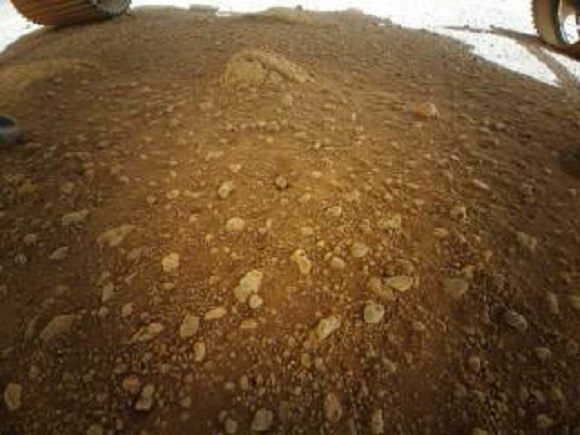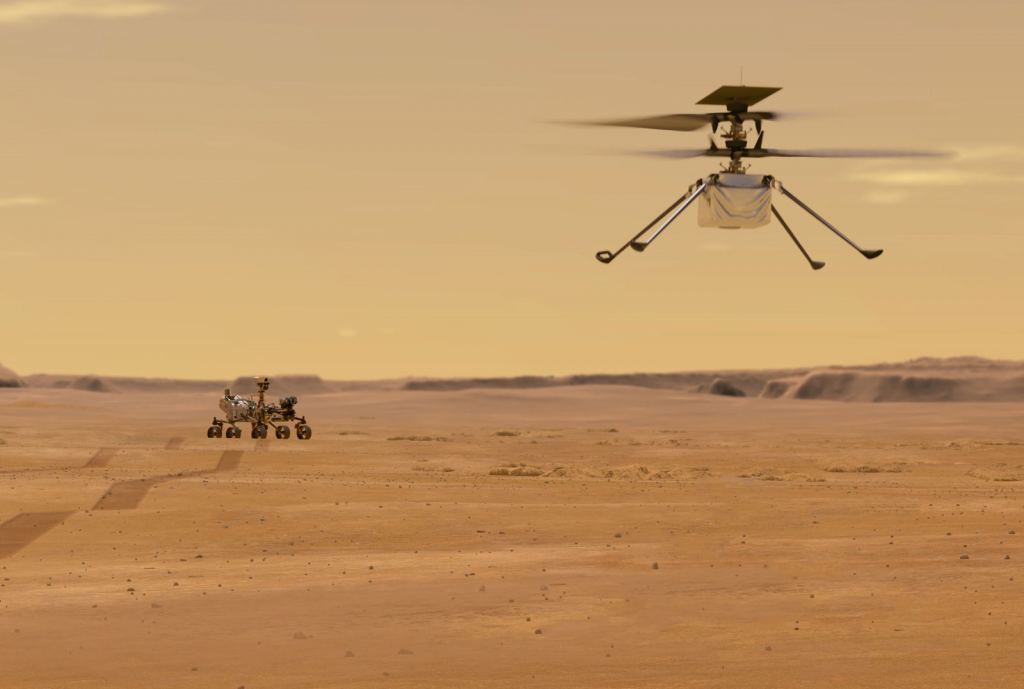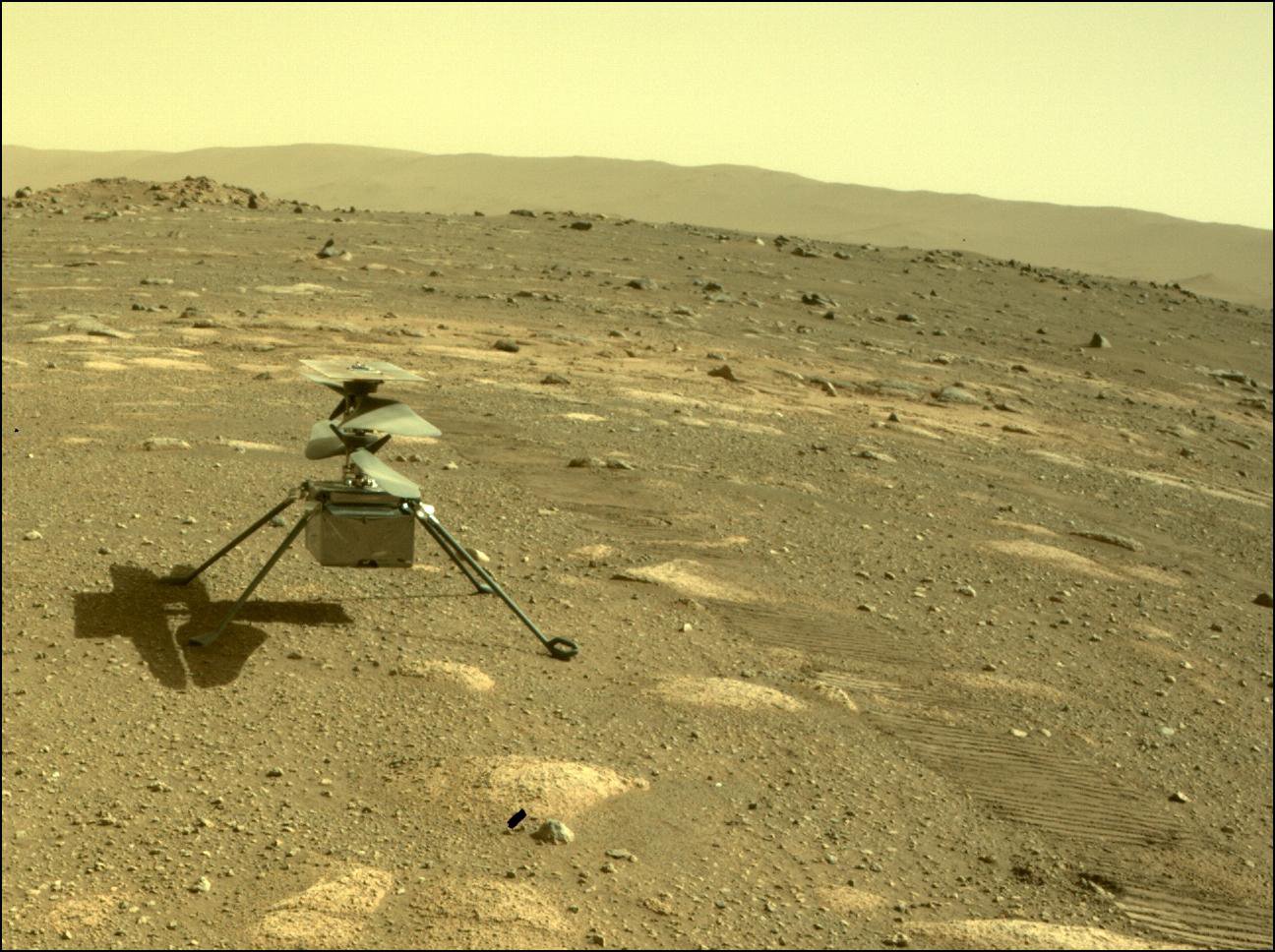On April 3rd, the Mars Ingenuity helicopter was removed from its carbon-fiber shield on the Perseverance rover’s belly. On Sunday, April 11th, it will make its first attempt at a powered, controlled flight, becoming the first aircraft to operate on another planet. In the meantime, Ingenuity accomplished another major milestone as it survived its first full night on the Martian surface.
Surviving that first night was no easy task for the 1.8 kg (4 lbs) rotorcraft. Around the Octavia E. Butler Landing – where the Perseverance rover is stationed in the Jezero crater – nighttime temperatures can plunge as low as -90 °C (-130 °F). These conditions can cause unprotected electronics to freeze and crack, as well as cause damage to onboard batteries that must to remain operational through the night.
Enduring a Martian night is just one of many challenges facing Ingenuity and its parent-mission Perseverance. However, the situation is complicated by the fact that the design of Ingenuity needed to be small enough to fit aboard the rover and light enough to fly in the thin Martian atmosphere (which has less than 1% of Earth’s atmospheric pressure).
By making it through an evening on Mars, Ingenuity has shown that it has what it takes to make it on the surface. As MiMi Aung, the Ingenuity project manager at NASA’s Jet Propulsion Laboratory, said in a recent NASA press release:
“This is the first time that Ingenuity has been on its own on the surface of Mars. But we now have confirmation that we have the right insulation, the right heaters, and enough energy in its battery to survive the cold night, which is a big win for the team. We’re excited to continue to prepare Ingenuity for its first flight test.”
Before Ingenuity was removed from Perseverance’s belly, it was receiving power from the rover. Once it had deployed its four legs and was on its own, Perseverance was instructed to move away so Ingenuity could start drawing power from its solar panels (which mounted atop its rotors). Once flight tests begin, Perseverance will act as a communications relay between Ingenuity and Earth and will monitor its flights from the “Van Zyl Overlook.”
These flights are the sole scientific objective of Ingenuity, which is a technology demonstration designed to see if airborne missions can operate in Mars’ thin atmosphere and gather information from a wider variety of locations. Ingenuity will complete its testing within 30 Martian days (sols), which is the equivalent of about 30 days and 18 hours on Earth. Once this is done, Perseverance will move into the next phase of operations.

Said Teddy Tzanetos, deputy operations lead for the Ingenuity Mars Helicopter at JPL, the next month will be a very lucrative time for the mission. “Our 30-sol test schedule is frontloaded with exciting milestones,” he said. “Whatever the future holds, we will acquire all the flight data we can within that timeframe.”
For the next two days, Ingenuity will gather data on its thermal-control and power systems to see how well they perform in the Martian environment. This is crucial since the helicopter is standing on its own and can no longer rely on the Perseverance rover for thermal protection. This data will be used to fine-tune Ingenuity’s thermal-control system so that it can continue to endure the extremely cold Martian nights and operational during the flight period.
So far, Perseverance has managed to provide the first of the many images it took of the helicopter on the surface of Mars (shown at top) and the first image Ingenuity took of the surface itself (shown above). The first image was taken by Perseverance’s rear left Hazard Avoidance camera, which shows Ingenuity rotor blades still stacked on top of each other and its four footpads planted against the surface.
If you look to the right of the helicopter, you can see tracks left by Perseverance‘s wheel after it moved away to place it in direct sunlight. Ingenuity will remain deployed on the surface until the mission controllers are done gathering data on the helicopter’s systems, all pre-flight checks are completed, and both it and the rover are positioned for the flight test.

The flight date may shift as needed, but NASA hopes to commence flight testing no sooner than Sunday, April 11th. This first controlled flight will be shared via a live stream on Monday, April 12th, starting at around 3:30 A.M. EDT (12:30 AM PDT). You can watch the live coverage on NASA Television, the NASA app, on multiple agency social media platforms (such as JPL’s YouTube and Facebook channels), and the agency’s website.
A preflight briefing will be broadcast on Friday, April 9th, at 01:00 P.M. EDT (10:00 A.M. PDT) which will provide the latest details on the helicopter’s operations and what to expect during its first flight. NASA will hold a panel discussion on Thursday, April 8th, at 01:00 P.M. EDT (10:00 A.M. PDT) for students and members of the general public, letting them know what to expect before the flight and where related resources can be found.

